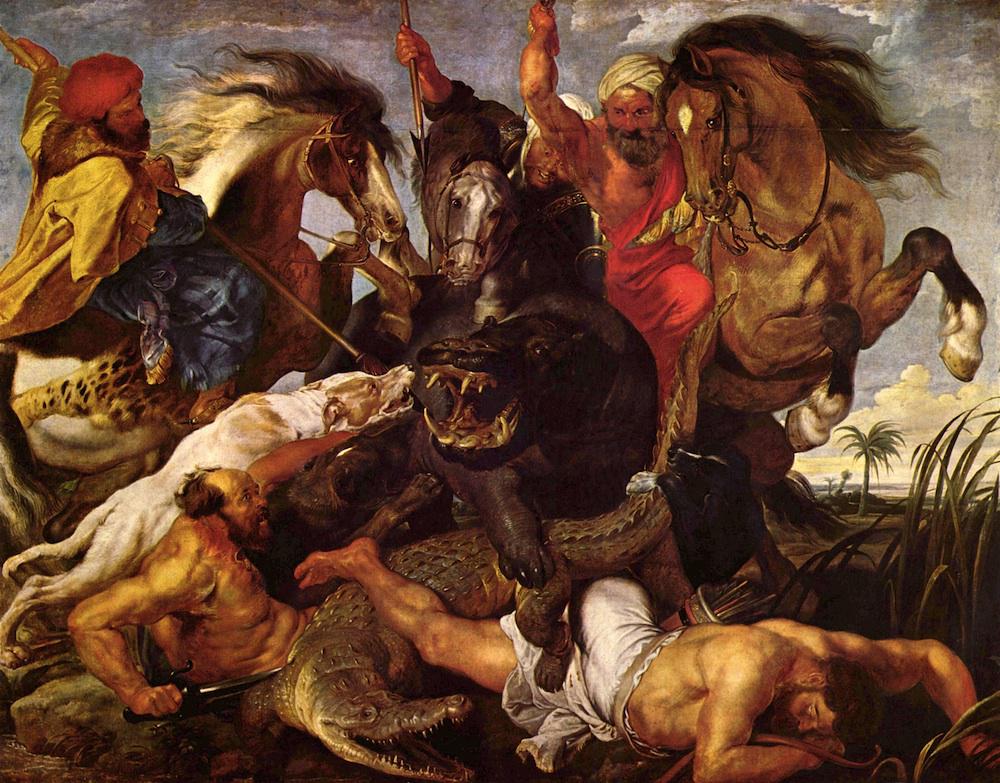The Vault is Slate’s history blog. Like us on Facebook, follow us on Twitter @slatevault, and find us on Tumblr. Find out more about what this space is all about here.
The best early-modern European picture of a hippopotamus comes from the hand of the celebrated Baroque painter Pieter Paul Rubens. Until 1800, this 1616 painting remained the only realistic image of this fearsome animal to be produced north of the Mediterranean.
Large and aggressive, live hippos were practically impossible to transport in those days. In modern times, the first two hippos arrived in Italy in 1601, when the Italian surgeon Federico Zerenghi brought their skins from Egypt first to Venice, where he had them stuffed, and then to Rome and Naples, where he exhibited them. As luck would have it, Rubens was traveling in Italy at that time, and circumstantial evidence indicates that he probably saw these exhibits with his own eyes. Exotic animals were a prized painterly object, and it is no wonder that Rubens decided to picture this animal in his series of Hunts that he painted for Maximilian I, ruler of Bavaria.
Hippos remained a rarity for a long time. One live hippo arrived in Amsterdam in the late 17th century, and another one in Florence (where it can still be seen in its full glory, thanks to the art of taxidermy) but no further specimens would reach Europe up until the 19th century.
Rubens’ painting, executed on an 8-by-10-foot (98-by-126-inch) canvas, shows the artist at the height of his powers. Zerenghi’s hippos lost much of their shape during the process of stuffing, and Rubens had to rely on his knowledge of comparative anatomy to recreate the musculature of the animal. He also obscured much of the hippo’s body, hiding little-known details in the background, and put the well-preserved mouth in the foreground.
Rubens performed similar illusionistic tricks with tigers, another species he was not strongly familiar with. Assuming that tigers shared their anatomy with the lion, specimens of which were omnipresent at European royal courts, he was able to offer stunning representations of them without having to observe them alive.
In this respect, Rubens’ painterly technique, which allowed him to present the hippo using artistic license, was far superior to the skills of contemporary zoologists. The renowned naturalist Ulisse Aldrovandi also carefully observed Zerenghi’s hippos, and created representations based on available knowledge. But because Aldrovandi limited himself to using the anatomical information he considered scientifically accurate, his surviving drawings and woodcuts feature hippos that look comparatively stiff and awkward to 21st-century eyes. In this case, art, through extrapolation and exaggeration, arrived at a realistic visual representation before science did.
